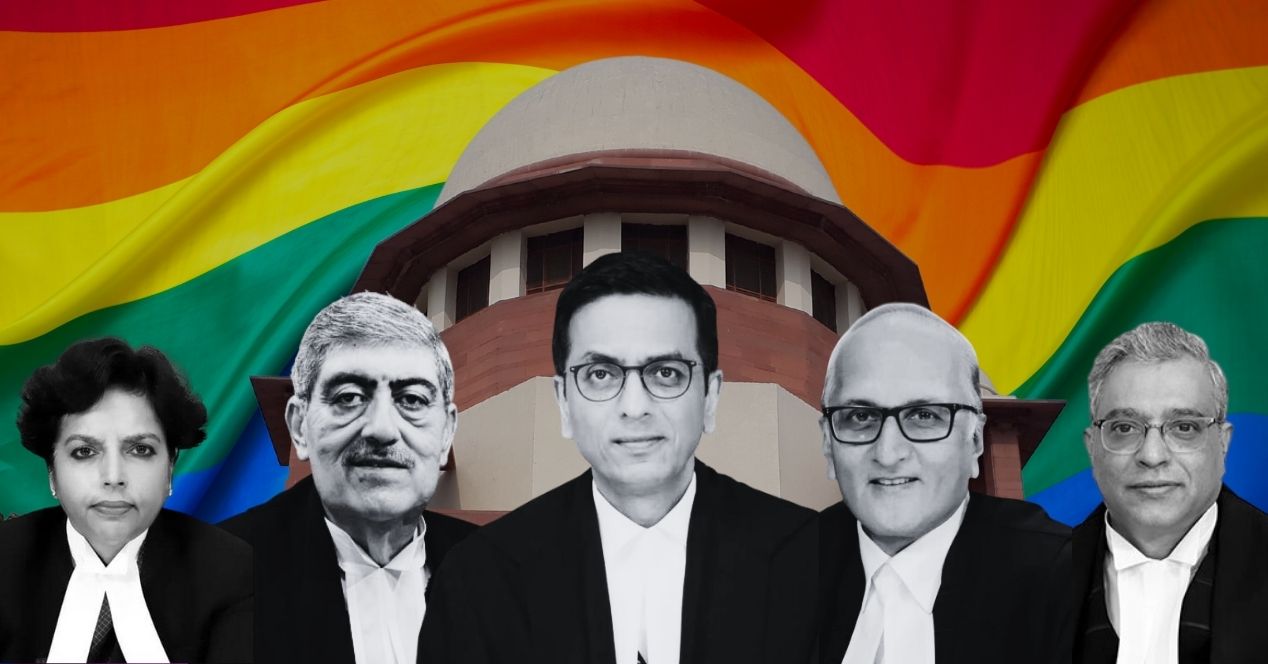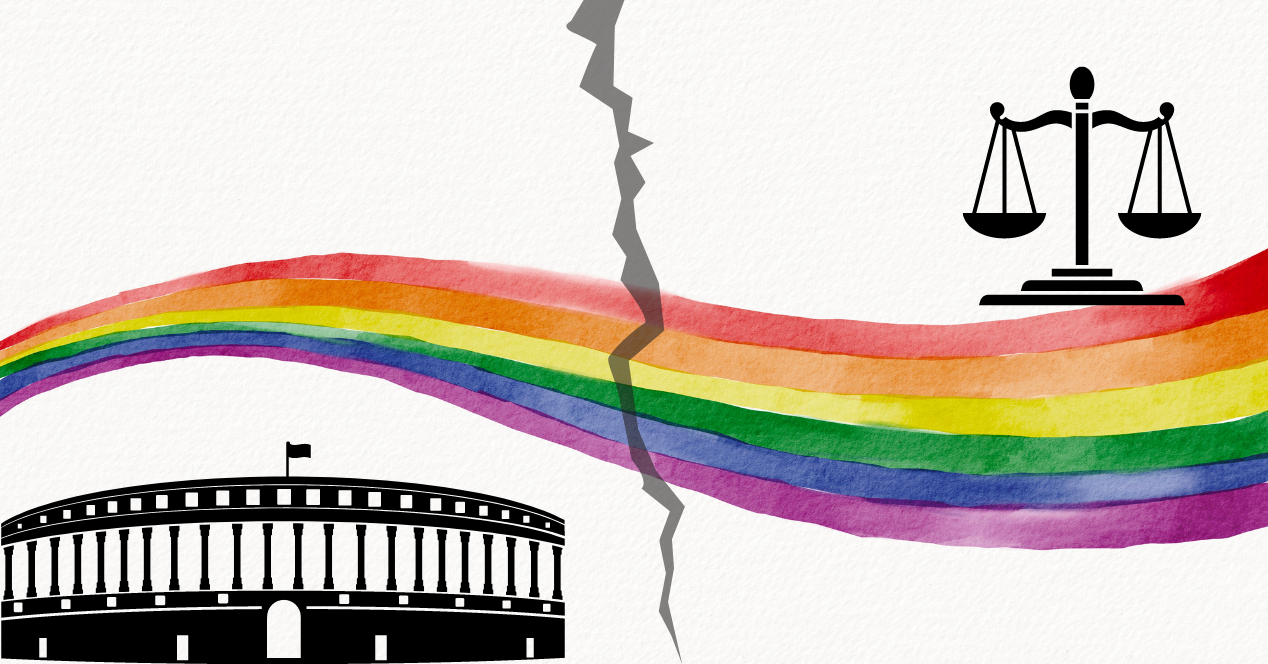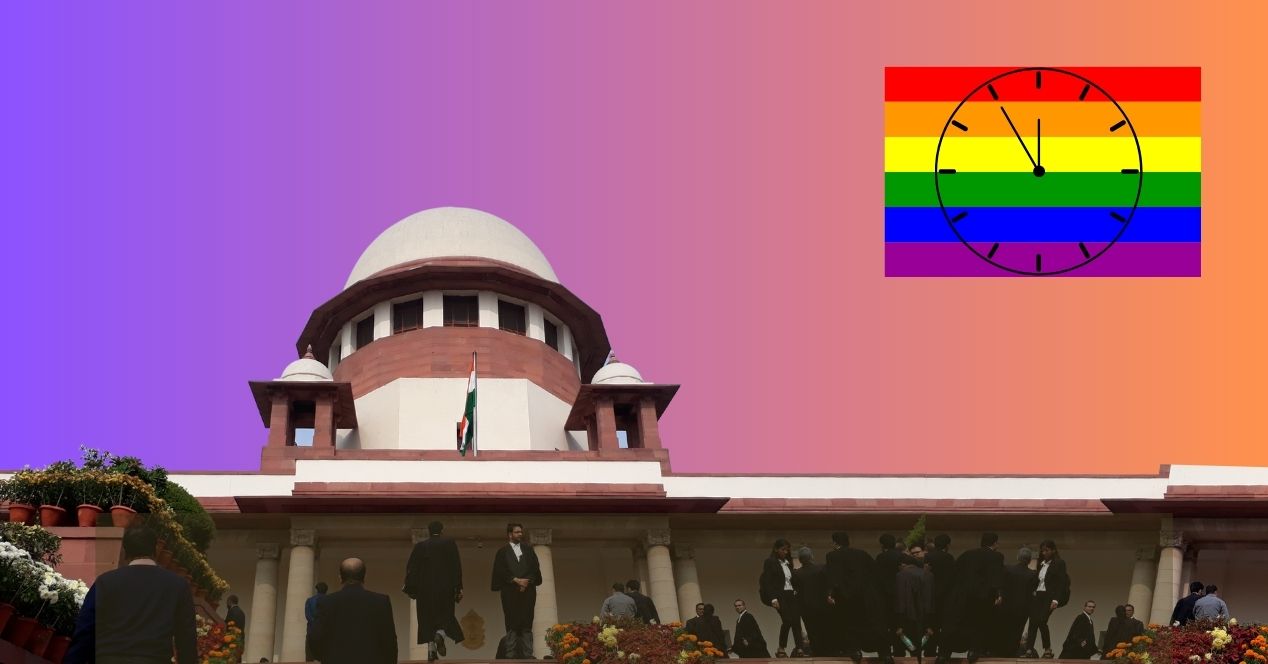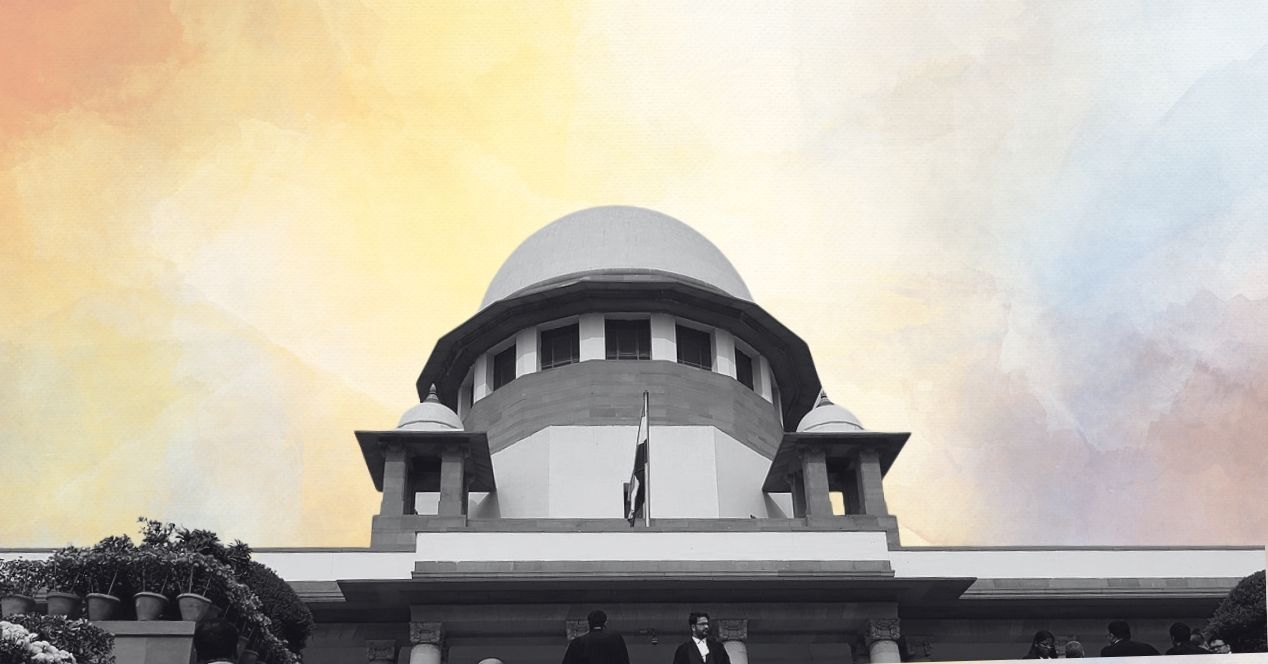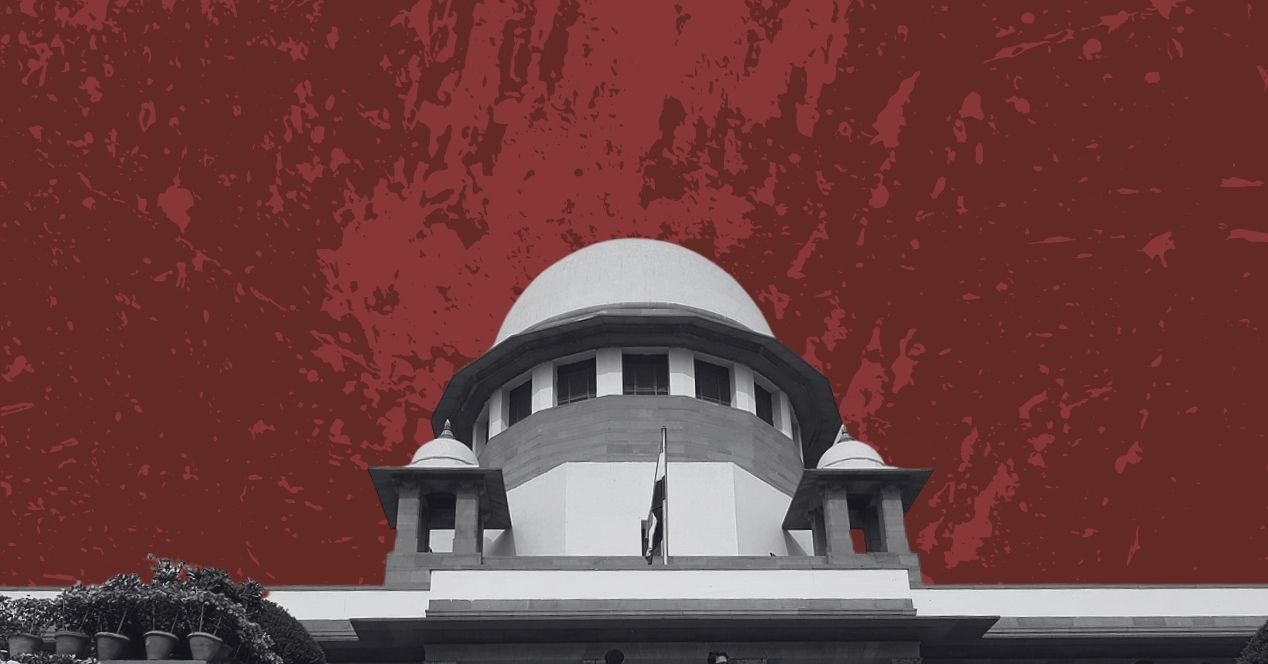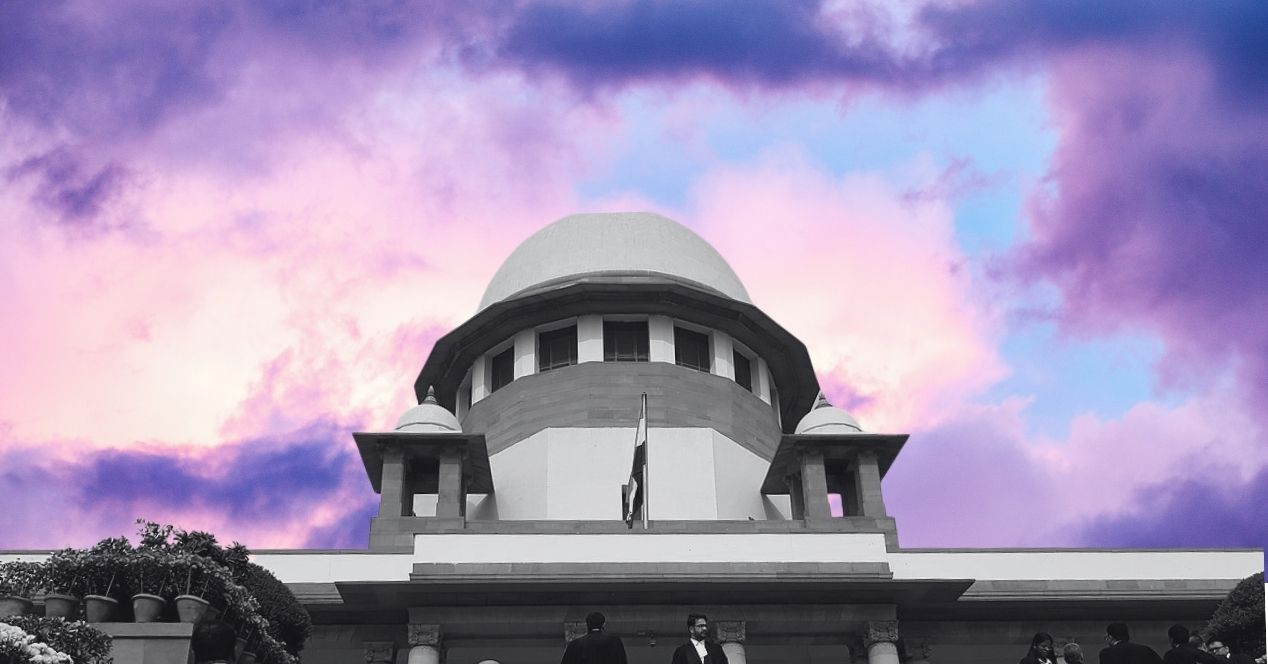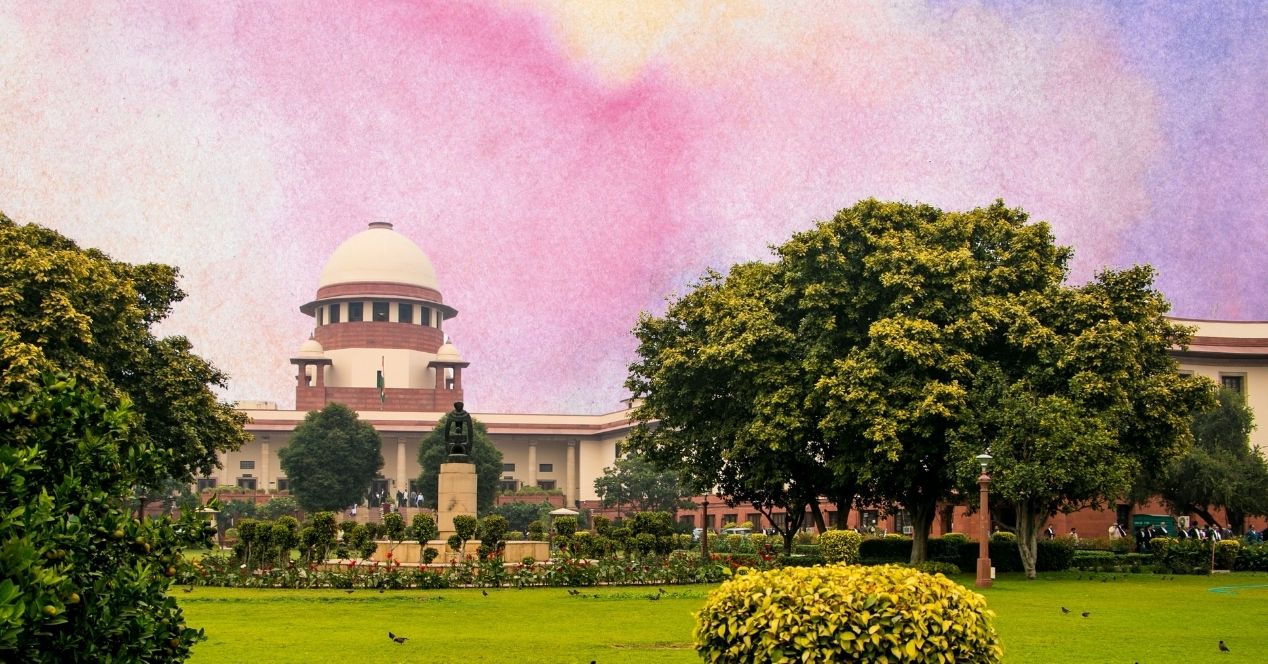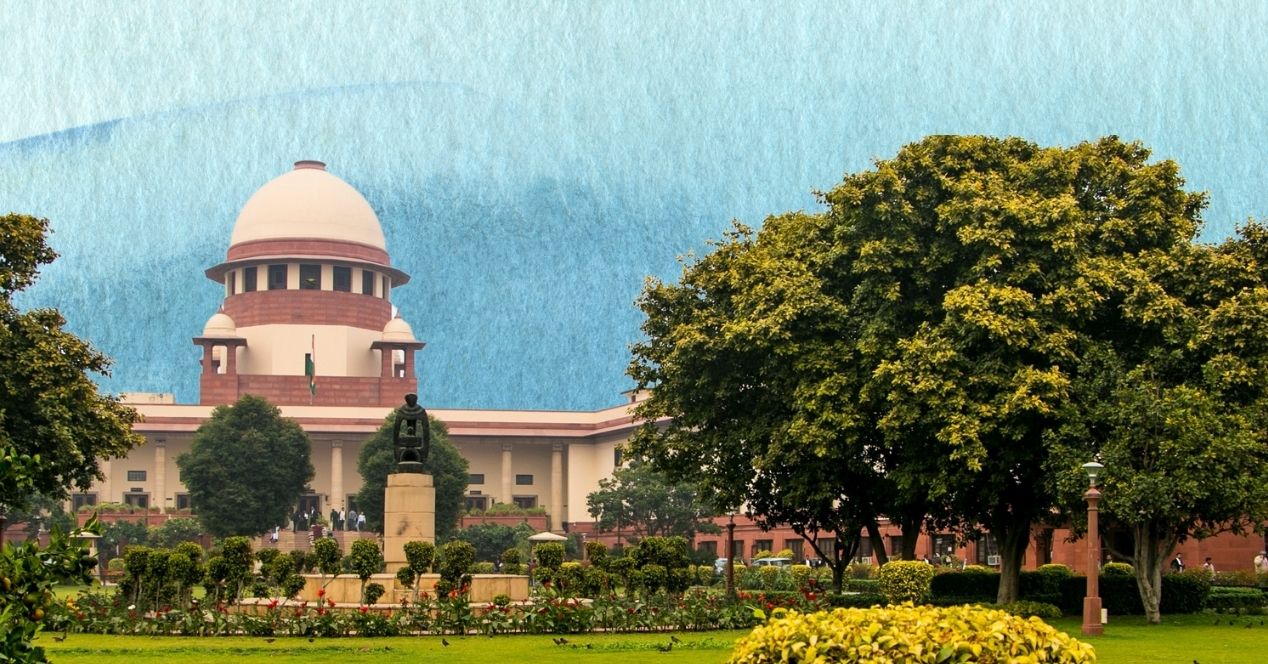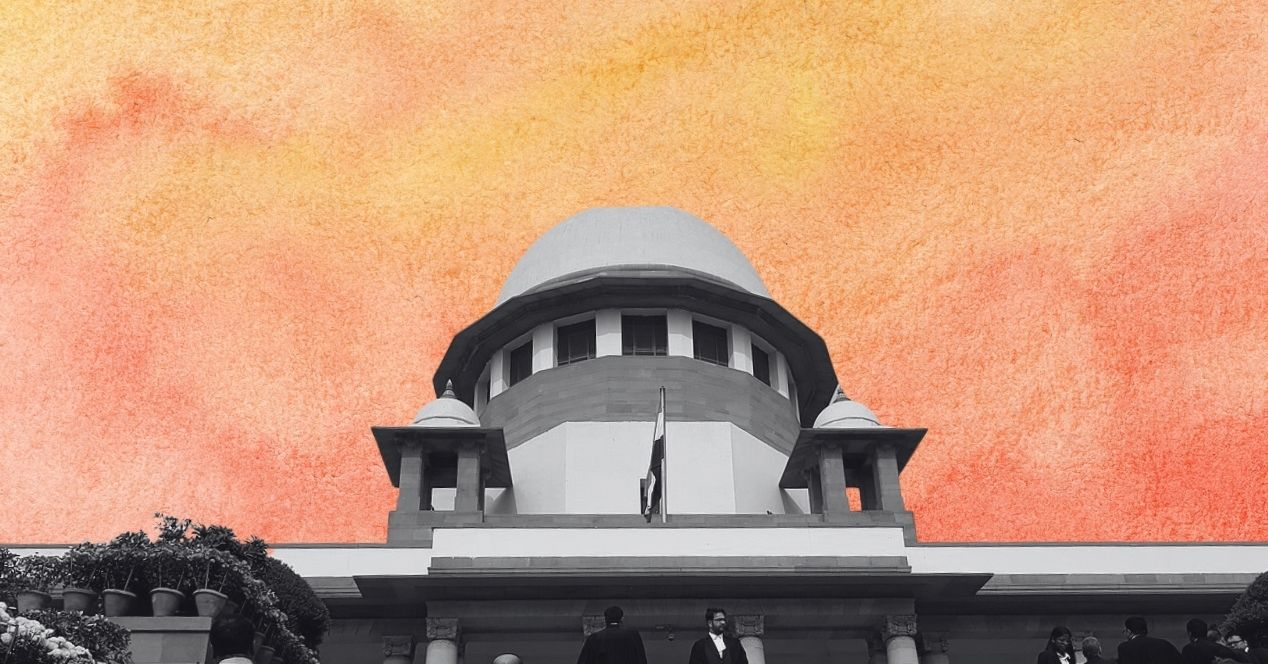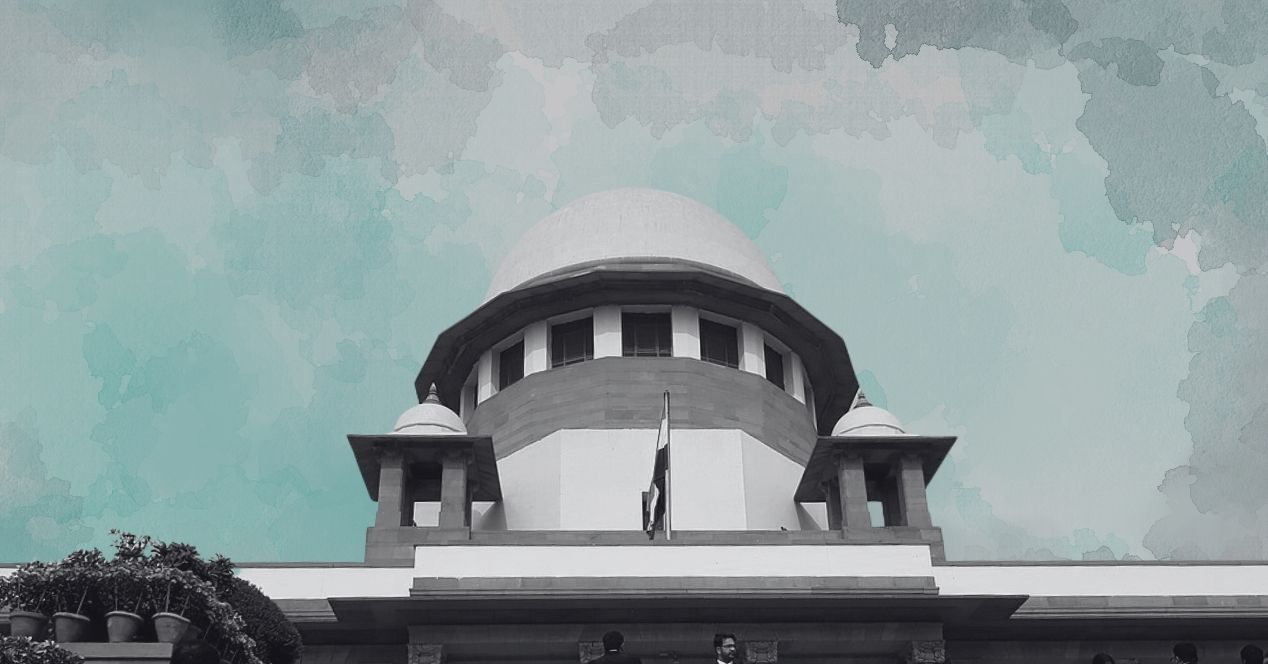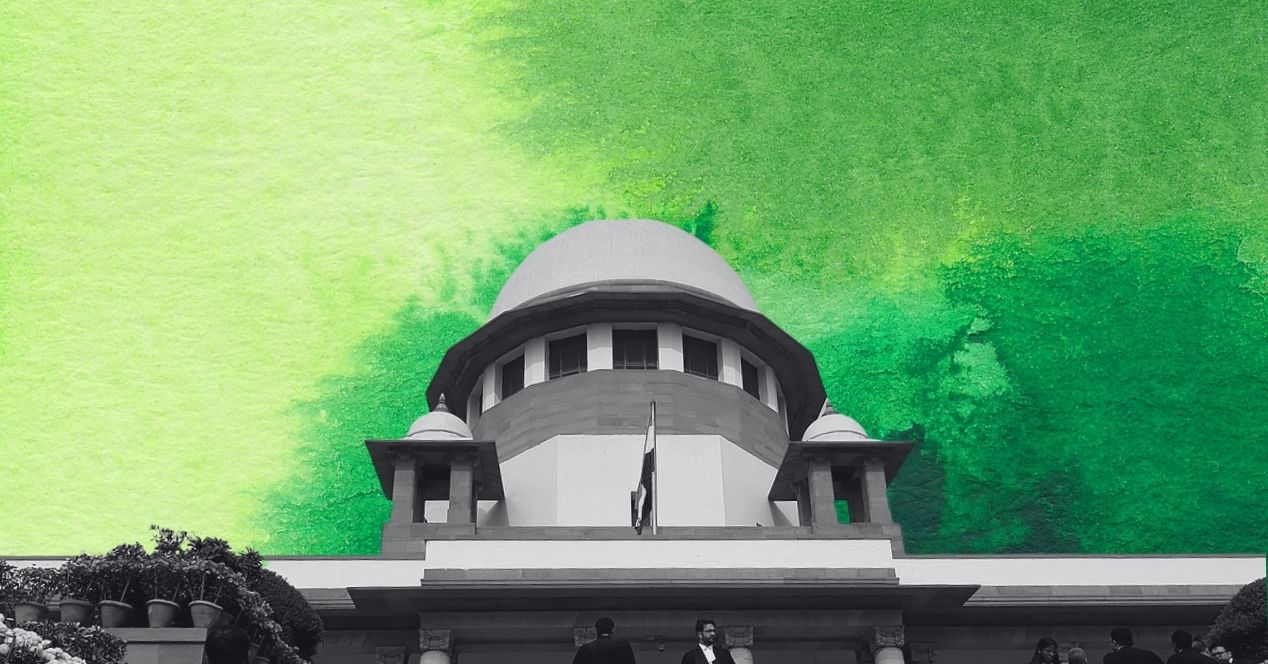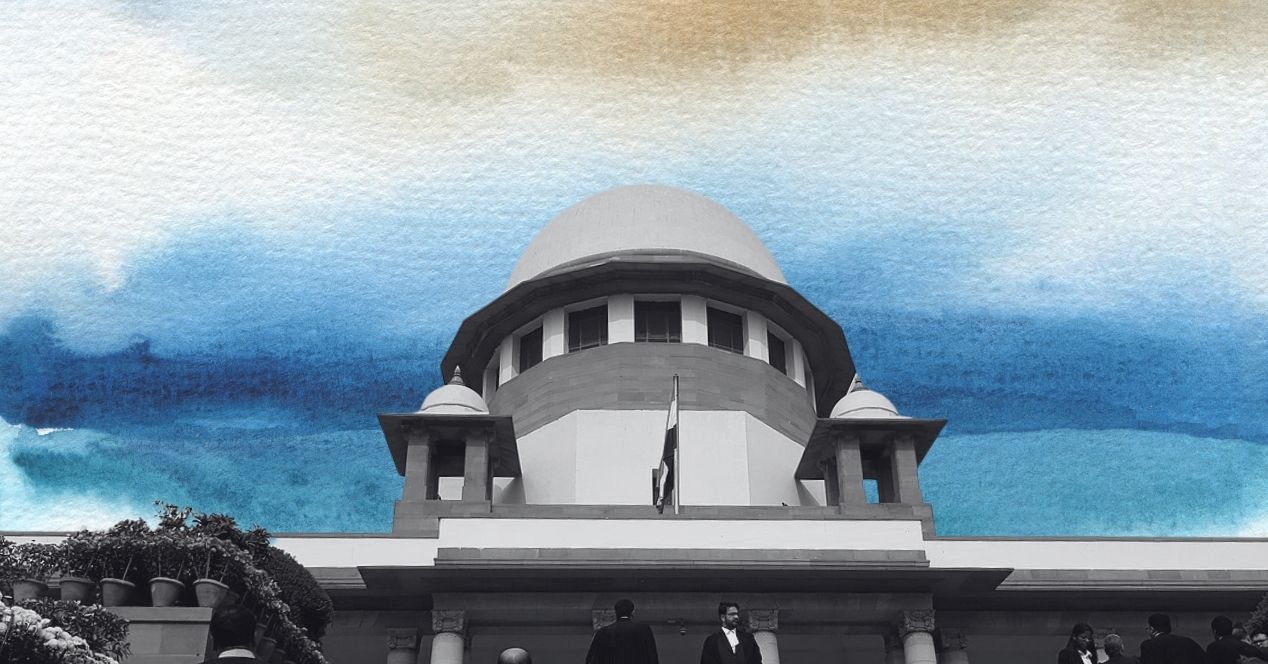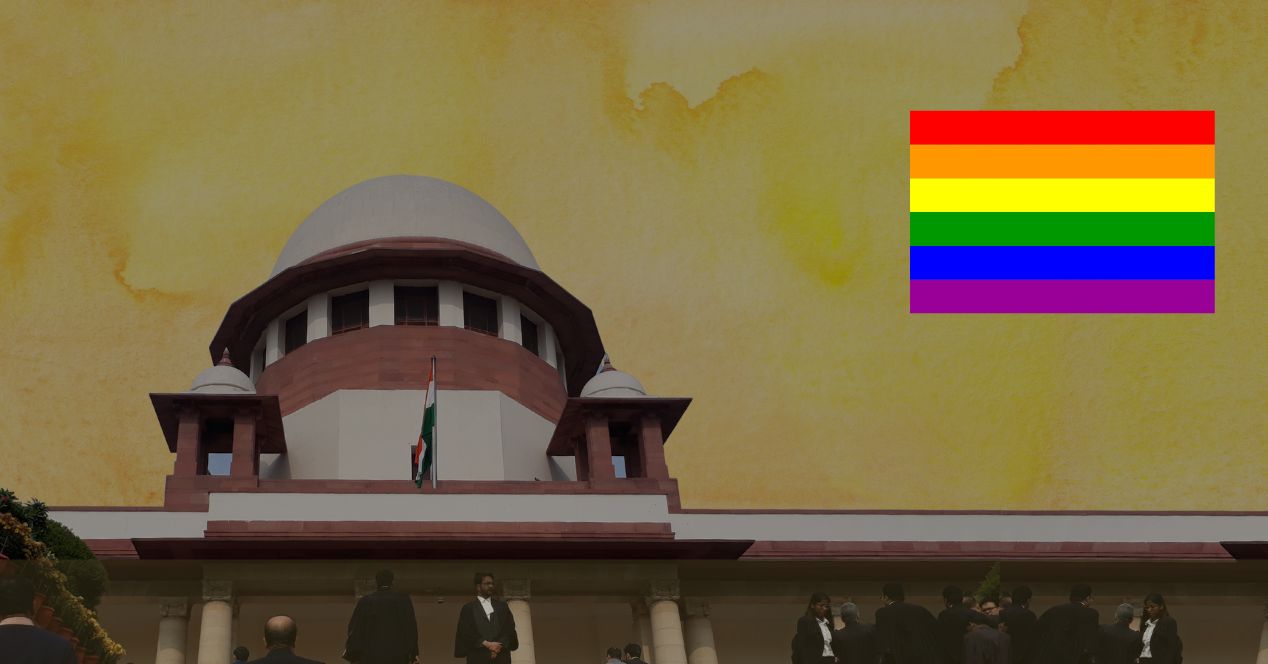Plea for Marriage Equality: Judgement Summary
Plea for Marriage EqualityJudges: D.Y. Chandrachud CJI, S.K. Kaul J, S.R. Bhat J, Hima Kohli J, P.S. Narasimha J
On 17 October 2023, the Supreme Court rejected the plea for queer persons’ right to marry in India. The five-judge Bench unanimously agreed that there is no fundamental right to marry, and marriages between queer persons cannot be read into the Special Marriage Act, 1954. All five judges agreed that transgender persons in heterosexual relationships have the right to marry under the existing legal framework.
In a 3:2 majority, the bench held that same-sex couples did not have the right to form civil unions, and that they could not adopt.
Four opinions were written in this case, by Chief Justice D.Y. Chandrachud, Justices S.K. Kaul, S.R. Bhat (on behalf of Justice Hima Kohli) and P.S. Narasimha.
Unusually, the Chief Justice was in the minority. In the past decade, the Chief Justice has been in the minority in a Constitution Bench three times—in the challenge to triple talaq (2017), reservations for Economically Weaker Sections (2022) and the present case.
Is the Supreme Court the right forum to recognise queer persons’ right to marry?
Chief Justice D.Y. Chandrachud answered in the affirmative. Underscoring the importance of judicial review, he indicated that the Supreme Court was the appropriate forum to consider a queer person’s right to marry. In April-May 2023, the Union government had argued that the Court’s intervention would encroach on the legislative domain and breach the doctrine of separation of powers. The doctrine stipulates that the three organs i.e. Legislature, Executive, and Judiciary perform their own distinct functions. According to CJI Chandrachud, the power of judicial review is an essential element in this doctrine. Thus, the Court is within its powers to consider whether the fundamental rights of queer persons are being violated.
Justice Bhat disagreed, and held that though the “court may feel the wisdom of a measure or norm that is lacking”, it must be careful to not venture into the powers and functions that are constitutionally awarded to other “departments and organs to discharge”. Though the impact of the lack of legal entitlements to queer persons are discriminatory, the Court cannot “fashion a parallel legal regime, comprising of defined entitlements and obligations” which would be required in this case.
Is there a fundamental right to marry? [Unanimous decision]
CJI Chandrachud held that “the Constitution does not expressly recognise a fundamental right to marry”. He pointed out that the laws relating to the institution of marriage are enacted by the Parliament. State legislatures are permitted to make amendments to such laws. He highlighted that some state legislatures who “have not created an institution of marriage in exercise of their powers…would be obligated to create an institution because of the positive postulate encompassed in the right to marry.”
In their arguments, the petitioners had relied on Shafin Jahan v Asokan K.M (2018) and Shakti Vahini v Union of India (2018) to argue that the marriage was a fundamental right. Both cases dealt with an inter-faith and inter-caste marriage between a biological man and a biological woman. Shafin Jahan held that “choice of a partner, whether within or outside of marriage, lies in the exclusive domain of the individual, and that the State cannot dictate or limit the freedom to choose a partner.” Similarly, Shakti Vahini held that when two adults choose to marry out of their own volition […] they have a right to do so.” The Chief, however, held that these cases would not apply in the present case. He reasoned that they specifically dealt with situations where state and non-state actors “prevented a couple which was otherwise entitled to marry, from marrying”. Simply put, the statutory right to marry is only enforceable in relationships which are already approved by the Union government.
Justice S.R. Bhat agreed with the CJI, that “the constitution does not expressly recognise a right to marry.” He wrote that marriage exists “independently of the state” indicating that its source is not from law, but from society. The state can “utilise or accommodate” but cannot abolish marriage.
“This implies that state power to regulate marriage does not sit easy with the idea of marriage as a fundamental right,” he held.
He further held that if there is a fundamental right to marry, it cannot be operationalised unless it is brought to the level of Articles 15 and 16. This would task the state to “create conditions” to further its goals, and give effect to Articles 17, 23, 24 which impose positive obligation on the state. In this case, however, the Court could not “require the state to create social or legal status”. Justice Bhat wrote that the demand in this case was to access the “publicly created and administered institution” of marriage which cannot then become a demand to create a legally recognised institution and status. As the right to marry is a “personal preference” which “confers social status”, it is not an “enforceable right, which the courts can compel the state or governance institutions to provide.”
Justice Narasimha added that marriage is a fundamental freedom, not a right.
Do queer couples have a right to enter into a “civil union”? [3:2 split]
CJI Chandrachud was in the minority in holding that queer couples have a right to enter into a civil union. He observed that “the right to enter into a union includes the right to associate with a partner of one’s choice.” He stated that the ability to form “intimate associations” plays a vital role in fulfilling the “self-development” of a human being. “For the full enjoyment of such relationships, it is necessary that the State accord recognition to such relationships”, he stated. This right to enter into “civil unions” the Chief held is protected under Article 19, namely, the freedom of speech and expression and the freedom to form associations. He elaborated that this right also “includes other forms of expression such as the manifestation of complex identities of persons through the expression of their sexual identity, choice of partner, and the expression of sexual desire to a consenting party”. This was recognised in National Legal Services Authority (Nalsa) v Union Of India (2014) and Navtej Singh Johar v Union of India (2018). Further, he wrote that the freedom to form association also includes the freedom to engage in “other forms of association” to exercise all forms of expressions enumerated above. Subsequently, he added that Article 15 prohibited discrimination on the grounds of “sex”.
“Sex”, he stated, includes “sexual orientation”, which means that any restriction on the right to enter the “civil union” based on sexual orientation would be discriminatory and violate Article 15.
According to the Union government, recognising the right to enter a civil union would lead to “social chaos” because it would “extend the right to incestuous, polygamous, or polyandrous relationships”. CJI Chandrachud stated the Union government’s apprehension was “unfounded”. He stated that sexual orientation is a part of Article 15, and prohibiting relationships based on sexual orientation would violate constitutional provisions. He held that the Union government has an obligation to recognise such relationships and extend all benefits which would otherwise be available to a heterosexual couple in a marital relationship.
Justice S.K. Kaul agreed with CJI Chandrachud and stated that the right to form a “civil union” is a feature of Article 19 and Article 21 (right to personal liberty). Further, principles of equality prescribe that the right to form this union is available to all, “regardless of sexual orientation and gender.”
Leading the majority opinion on this question, Justice Bhat agreed with the CJI that “all queer persons have the right to relationship and choice of partner, cohabit and live together, as an integral part of choice.” This is already recognised under Article 21. However, he disagreed with the reasoning that a civil right to a union in the form of a new law must exist. “Ordering a social institution” would require a completely different legal framework with a “new universe of rights and obligations.” This would require a separate regime for registration of the civil union, laying down the conditions of a valid union, setting eligibility, age, restrictions, divorce, alimony and a bouquet of other rights that are ancillary to marriage. The state is not obliged to recognise this “bouquet of entitlements,” Justice Bhat noted
Agreeing with Justice Bhat, Justice Narasimha added that mandating the state to recognise a civil union, would violate the doctrine of separation of powers.
Is the Special Marriage Act, 1954 unconstitutional for excluding non-heterosexual couples? [Unanimous decision]
Petitioners in this case had argued that the Special Marriage Act (SMA) violated the right to equality as it failed to recognise the non-heteronormative marriages. This, they claimed, discriminated between heterosexual and non-heterosexual persons.
Referring to the “root of all problems”—Section 4 of the SMA, CJI Chandrachud held that declaring the provision unconstitutional would diminish the purpose of the “progressive legislation” that the Act incorporates.. The SMA, he reasoned, was enacted to bolster interfaith and inter-caste relationships. Therefore, declaring it “void” would “take India back to the pre-independence era” where inter-caste and inter-faith marriages were impermissible. “Such a judicial verdict would not only have the effect of taking the nation back to the era when it was clothed in social inequality and religious intolerance but would also push the courts to choose between eradicating one form of discrimination and prejudice at the cost of permitting another,” he stated.
In contrast to the Chief’s opinion, Justice Kaul held that the SMA was violative of Article 14 as it discriminates against queer persons. He referred to the two-pronged test for determining whether a law violates the right to equality. The test suggests that a statute must have a clear classification between different groups. The distinction should have a reasonable nexus with the object of the statute. If this nexus is not found, the statute or provision violates Article 14. He stated that there is a clear distinction between non-heterosexual and heterosexual persons under the SMA. However, there is no reasonable explanation for drawing that distinction. The intent of the SMA to facilitate inter-faith marriages, he said, had no “nexus” with the exclusion of non-heterosexual couples.
Justice Bhat began by referring to various judgements that hold that a classification is only considered to be violative of Article 14 when there is no “conceivable reasonable basis for the differentiation.” Such differentiation must be understood in the context of the objectives of the law that creates the classification. Relying on precedents, he wrote that unless the excluded category in any classification belongs to the included class, it does not amount to exclusion. Justice Bhat noted that the “sole intention” of the SMA was to “facilitate marriage between persons professing different faiths”. At the time that the law was made, consensual sexual relations between persons of the same sex remained prohibited. Moreover, it was not the focus of the law. He reasoned that “as long as an objective [of a law] is clearly discernible, it cannot be attacked merely because it does not make a better classification.”
Can the right to marry be read into the provisions of the Special Marriage Act, 1954? [Unanimous decision]
On reading queer marriage into the SMA, petitioners had argued that the Court must adopt a purposive interpretation of the law. It must use “gender neutral interpretation or use of words which include non-heterosexual couples should be resorted to.”
CJI Chandrachud held that a “workability model” i.e. adding, deleting, or substituting words in Section 4, could not be accepted mainly due to “institutional limitations”. Accepting the model would lead to replacing or deleting words in other provisions of the SMA, and several other legislations such as the Hindu Succession Act, and the Indian Succession Act etc. This would “in effect be entering into the realm of the legislature”. He stated, “this Court would in effect be redrafting the law(s) in the garb of reading words into the provisions”, essentially violating the doctrine of separation of powers.
Justice Kaul, after noting that the SMA violates Article 14, agreed with CJI Chandrachud that there are “multifarious interpretive difficulties” when it comes to including non-heterosexual persons under the SMA. He accepted the Unions arguments that “tinkering with the scope of marriage under the SMA can have a cascading effect across these disparate laws”. However, Justice Kaul highlighted that this “cascading effect” only shows that the discrimination results from a “more deeper form of social discrimination against non-heterosexual people that is pervasive and structural in nature.” Citing “limited institutional capacity”, Justice Kaul stated that the Court has no adequate form of remedy. He reiterated that the right to a civil union would extend all benefits arising from a marriage.
Justice Bhat wrote that though precedents hold that “new facts and situations” must be read into the a statute where possible, they also warned that this cannot be used to construe “something conceptually different from what…Parliament must have intended.” He said that “objects of a statute, acquire primacy” in interpretation of statutes, and that “Parliament intended only one kind of couples, i.e., heterosexual couples belonging to different faiths, to be given the facility of a civil marriage” under the SMA.
Further, Justice Bhat warned that a gender neutral interpretation of the SMA would “complicate an already exhausting path to justice for women and leave room for the perpetrator to victimise them.” He then wrote “A law which was consciously created and fought for, by women cannot, therefore, by an interpretive sleight be diluted.” A gender neutral reading of the SMA would also impact gender specific aspects of the statute, Justice Bhat said. For instance, separate legal age for marriage for men and women, remedies for divorce and maintenance would pose serious challenges under a gender neutral construction. Finally, he wrote that “…words of the statutes have to be read, taking into account the fabric of concepts, rights, obligations and remedies which it creates.”
Can unmarried non-heterosexual couples adopt? [3:2 split]
Petitioners had challenged the Regulation 5(3) of the 2020 of the Central Adoption Resource Authority Guidelines which restricts adoption to single individuals and married couples who are in a stable marital relationship for two years. Further, Section 57(2) of the Juvenile Justice (Care and Protection of Children) Act, 2015 (JJ Act) mandated that both spouses had to consent for adoption.
CJI Chandrachud referred to Section 57 of the JJ Act which prescribes the eligibility criteria for adopting a child. He observed that the provision does not expressly impede unmarried couples from adopting a child because it uses the word “spouse” and not “married couples”. An unmarried couple may also include queer relationships. He held that Regulation is inconsistent with the JJ Act. Further, the Regulation, he said, violates Articles 14 and 15 of the Indian Constitution as it discriminates against unmarried couples. He highlighted that the Regulation treats marriage as a “yardstick” to classify stable couples who are considered fit to “ensure the best interest of the child”. Describing the word “stable” as vague, the Chief Justice stated that the Union had placed no data “to support their claim that only married relationships can provide stability”.
“…unable to concur” with CJI’s Chandrachud, Justice Bhat led the majority and held that a complete reading of Section 57(2) makes it clear that it only concerns joint adoption by married couples. Reading both married and unmarried couples into the provision “is not based on any known principle of interpretation,” he said. The law is designed this way keeping in mind the “best interest of the child” to protect it from instances where the marriage has broken down. As the JJ Act only enables adoption, marriage becomes a key prerequisite to attract protection from laws on divorce, custody, guardianship, maintenance, succession, among others.
The framework of marriage ensures that if one parent abandons the relationship, the other can maintain themselves and the child—a remedy that a couple with no legal recognition is deprived of.
Justice Bhat clarified that though a married couple is not a “morally superior choice” for parents, the adoption framework takes into account the “protections and entitlements, [which] flow from the institution of marriage.” The “guiding principle” of the JJ Act is the best interest of the child, “not to enable adoption for all”, he held.
Justice Bhat then recognised that the consequence of the absence of legal recognition of queer couples is that they have no option but to adopt individually. This would mean that neither the parents nor the child will enjoy any legal protections. He then said that the “State arguably has an even more urgent need to enable the full gamut of rights” to queer parents and children. The state needs to “ensure that the maximum welfare and benefits reach the largest number of children in need of safe and secure homes with a promise for their fullest development.”
Can transgender persons in heterosexual relationships marry under existing laws? [Unanimous decision]
The petitioners had argued that the right to marry should extend to trangender persons. The Union government had argued that a marriage is only between a “biological man” and a “biological woman”.
CJI Chandrachud held that a transgender person in a heterosexual relationship is entitled to marry after a “harmonious interpretation” of existing marriage laws and the Transgender Persons Act, 2019. He reasoned that marriage laws in India permit marriages arising out heterosexual relationships. The existing laws such as the SMA or other personal laws describe a marital relationship between a “man” and a “woman”, “husband” and a “wife”, “bride and a bridegroom”. If this is restricted, it would violate the Transgender Persons Act which prohibits discrimination of transgender persons. Further, he stated that a person is a transgender person by “virtue of their gender identity”, and it is not their “sexual orientation”.
In a little over 150 words, Justice Bhat concurred with the CJI, declaring the Madras High Court’s judgement in Arun Kumar v. Inspector General of Registration (2019) as “correct analysis”.
What were the directions?
The Bench unanimously agreed that queer persons face violence and discrimination in the country. To obviate the violence and discrimination, CJI Chandrachud issued the following directions for the Union, the state governments, and governments in union territories.
- Ensure that the queer community has access to goods and services without any discrimination.
- Governments must take the initiative to sensitise the public that queer identity is natural and not a mental disorder.
- Establish hotline numbers, and “safe houses” to assist queer persons who face violence and discrimination.
- Ban conversion therapy treatments for changing the gender identity or sexual orientation of a queer person
- Prohibit inter-sex children from undergoing forced operations, especially at an age where they are unable to consent to the operation
- Prohibit hormonal therapy or any other medical procedure as a “condition” to grant recognition of a person’s gender identity
- Draft modules under the Mental Healthcare Act, 2017 to assist the mental health of queer persons, with programs to reduce incidents of suicide and attempted suicide.
CJI Chandrachud also noted that queer couples are harrased by the police machinery. He noted that families register First Information Reports (FIRs) to bring back queer couples who have left their families, resulting in violence and unfair treatment on part of the police. To ensure that queer couples are treated fairly he issued the following directions for the police machinery:
- Prohibit harassment of queer couples by the police
- Ensure that a queer person is not forced to return to their “natal families if they do not wish to return to them.”
- Uphold the queer person’s freedom of movement
- Extend protection to queer persons facing violence from their families
- Carry out a preliminary investigation before registering a First Information Report (FIR) against a queer couple
Lastly, the Bench entrusted a great deal of expectation on a “high-powered committee” chaired by the Cabinet Secretary. The Committee would set out entitlements and rights for queer persons. CJI Chandrachud recommended that the committee should consider the following aspects:
- Queer partners should be considered as a part of the partners family for the purpose of ration cards
- Queer partners should be permitted to open a joint bank account with the option to add the name of the partner as a nominee
- Queers partners should be considered “family” when a medical practitioner is consulting the “family” of a terminally ill patient under the Euthanasia guidelines.
- Permit jail visitation rights to queer partners
- Permit access to the deceased body of the queer partner to arrange their last rites.
- Permit succession rights, maintenance, financial benefits, family pension, and insurance for the queer partners.

